![]()
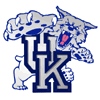 | 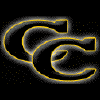 |
![]()
[Link to All-Time Series Results]
Centre College may not come to mind when one considers the top rivals of the University of Kentucky athletic program, however there once was a time when tiny Centre, of nearby Danville Kentucky, represented the greatest and fiercest rivalry of the day. There are opponents who have since established longer lasting series, experienced more defining moments or memorable incidents and competed for more important prizes etc., but no competitor of Kentucky has held the place of more intense rival than that of Centre College. So much so that often the remainder of Kentucky's schedule was considered to be of little consequence, as long as the boys from State beat the boys from Centre. Some of the well known names in the state (and nation) during the early part of the century participated in this series, from legendary gridiron hero Bo McMillin, to Basil Hayden, Paul McBrayer and Ed Diddle among many others.
All games in the series occurred prior to the arrival of Kentucky's legendary coach Adolph Rupp. Given the astounding winning tradition which Rupp established through his 41 year career, the period before his time at UK is often overlooked and largely forgotten by those who look back over UK's rich basketball history. But the match with Centre helped to develop and in many ways define the early years of Kentucky basketball and increased the interest in what was at the time a minor sport. The rivalry illustrates how Kentucky was able to overcome their local battles and rivalries to embark on the long path to national prominence.
![]()
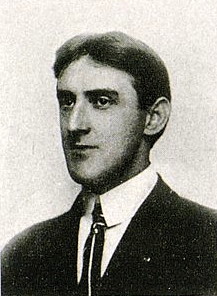 |
The basketball teams had no coach beyond the players themselves until 1910. This situation was probably just as well, since due to the newness of the sport, very few people were qualified to coach anyway. It was a struggle just to find competent officials. In the early days, respected townsmen, school administrators and former players were called upon to officiate games. Each team often brought their own official, with the representatives sometimes alternating at halftime between acting as the umpire and the referee, just to even things out. The affairs of the team including scheduling, collecting gate receipts etc. were done by student managers, although the faculty kept tabs on the (meager) cash flow.
The early squads generally competed against local universities, YMCAs and athletic clubs, yet Kentucky struggled to produce winning teams (in fact the first six squads were all losing ones). The very early rival of State College could be found across town in the form of Kentucky University [which was later renamed Transylvania] and over the county line in nearby Scott County against Georgetown College. Slowly, the sphere of matches broadened as State College began to face other schools in the outlying region along with teams from Louisville, Cincinnati and beyond.
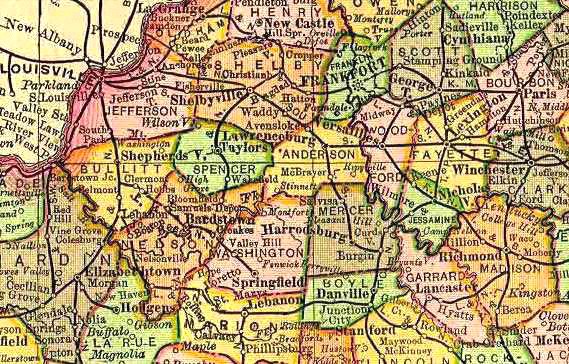 |
One of these schools was Central University located southwest of Lexington in Danville KY, Boyle County. Central was the name of the school at the time, after the original Central University in Richmond moved to Danville and consolidated with the longstanding Centre College in 1901. Although Kentucky and Central were heated football rivals since the late 1800's, the first basketball match between the two schools didn't occur until the 1906 season, soon after Central began playing the sport.
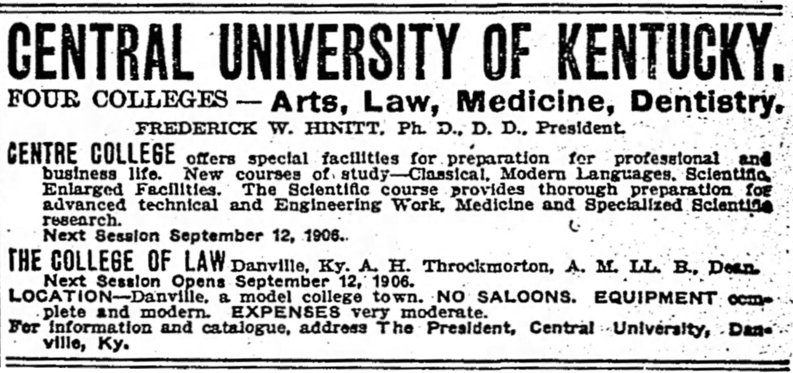 |
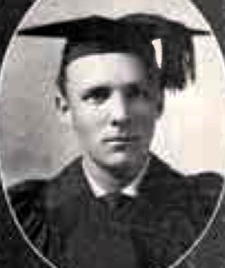 |
| Nicholas Dosker |
The game against State College was the second game ever played by Central, after a home loss against Miami. It was held in State College's gymnasium which consisted of the north wing of Alumni Hall [later renamed Barker Hall], and was built in 1902 to provide suitable facilities for the expanding athletic interests of the student body. The gymnasium (now a dance studio) was cramped and lacked adequate lighting, but the teams had to make due for the early years of the sport. There was little provision made for spectators (capacity approximately 300), they sat on either end of the floor and ringed the upper running deck which encircled the playing floor.
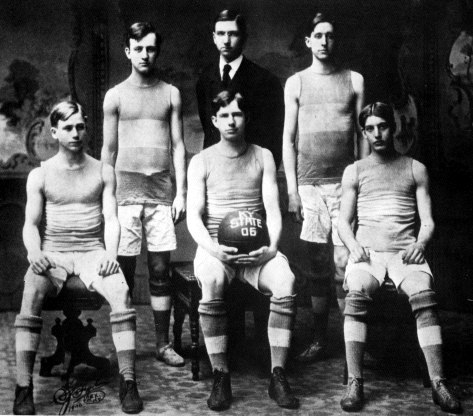 |
| 1905-06 State College Basketball Squad Seated (l to r): Richard Barbee, D.P. Branson, Stanley Baer Standing: J.M. Wilson, Manager Wylie B. Wendt and T.R. Bryant |
The game was considered a success as State College won by a single point 15-14, in what was described by the Lexington Leader as 'one of the cleanest and best games of the basketball season.' The Cadets (as the State College athletes were often called at the time) took a commanding halftime lead of 12-3 and held on against the Central second-half onslaught. State College was led by Stanley Baer and Richard Barbee, while Nicholas Dosker (who also was serving as coach) led Central.
The following week, the Cadets travelled to Danville for a rematch which they also won, 17-15 in a hotly contested game. J. Maury Wilson led State College with 8 points while Harper played the starring role for Central.
[Boxscore] - 1906
[Boxscore] - 1906
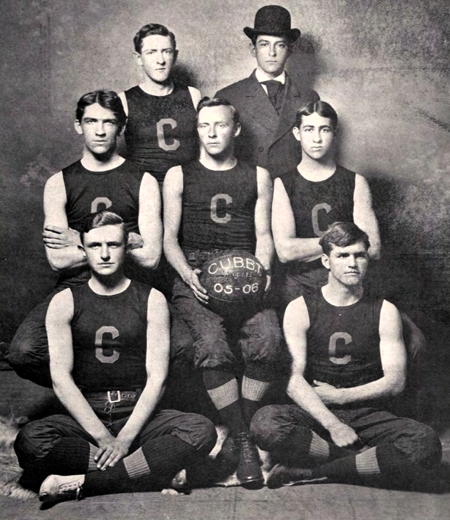 |
| 1905-06 Central Basketball Squad On Floor (l to r): George Morris, Emmet O'Neal Seated: J. Crawford Crenshaw, Captain Nicholas Dosker, Lucas Harper Standing: Watkins, Manager James Clinton Cheek |
So began the basketball series between these two very different schools. State College was born out of the Morrill Act in 1862 which provided land for states to create large state universities for providing an advanced level of education (specifically agriculture and mechanical arts although it didn't preclude other fields of study) for its residents. In the aftermath of the Civil War, many of Kentucky's southern neighbors found their universities devastated. The fledgling school in Lexington was able to capitalize on this situation by attracting many former scholars from these schools. The school was formerly known as the Agricultural and Mechanical College (A & M) of Kentucky, and as expected, its main emphasis was on agriculture, engineering and military affairs. In 1878, the A & M portion split from Kentucky University. A & M became State College while the remainder of Kentucky University eventually became what is today Transylvania.
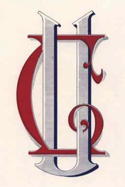 |
The two schools were polar opposites. Centre was located in a largely rural town, while State College was located in one of the largest cities in the state (estimated population in 1910 approximately 35,000). Centre was a small private institution content with their limited but influential alumni base. State College was a fledgling institution with a broader goal of becoming the major university in the state, and due to this goal was constantly looking to grow and expand. The Centre students, schooled in Latin, literature and the fine arts stood in contrast to the more practical pursuits of the State students, with interests in agriculture and engineering. Another difference was that Centre was an all-male school, while State College was co-ed since 1880. When the two sides faced each other on the football gridiron, the basketball court, or the baseball diamond, these fundamental differences helped shape what would become a great rivalry.
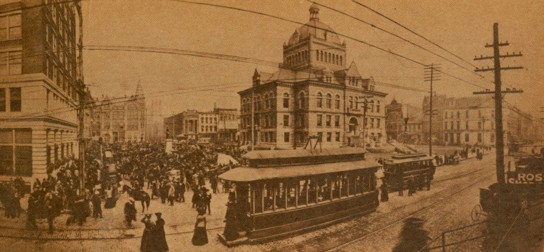 |
| 1906 Photograph of the Courthouse in downtown Lexington. Note the street car in the foreground was actually a ticket window. |
The 1907 season found the two schools facing off three times. State College took the first encounter handily 22-9 at home, despite not having the services of captain J. Maury Wilson who was recovering from a knee injury. Shelby Shanklin was inserted into the lineup and he performed well in Wilson's stead. The Central squad never got in sync and despite a determined effort and the interest of the Central athletic director (William Johnston), their lack of teamwork proved their undoing.
A few weeks later, the two teams met in Central's Boyle Humphrey Gymnasium (built in 1891 on the current site of Carnegie Library) and the outcome was much different. At the end of regulation the score was tied 23-all. That was the first time in Kentucky's basketball history that the game was tied as time expired. The two teams agreed to play additional time until someone scored. It took over five minutes of playing before Central's Emmet O'Neal scored a field goal on a difficult shot from the center of the floor. This shot gave Central the victory, 25-23 as O'Neal was carried off the floor by Central rooters.
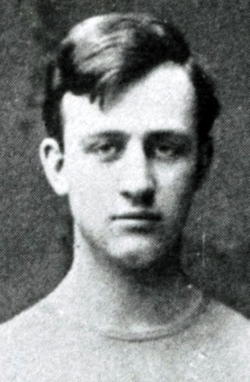 |
| J. Maury Wilson |
With the loss, the Lexington Herald claimed that State still had a chance to at least ruin Georgetown's claim to the state title if they beat them in a head-to-head game scheduled for the following week. There is no record, however, of such a game with Georgetown being played.
[Boxscore] - 1907
[Boxscore] - 1907
[Boxscore] - 1907
Despite fielding basketball squads for only a few years, Central was competitive in the loose confederation of central Kentucky intercollegiate teams which competed with one another for bragging rights. (The YMCAs at the time were still generally superior to their collegiate brethren, and although they competed against each other often, the YMCAs were not collegiate and thus were not eligible for the State Championship.) Central's fortunes received a boost in 1908 with the arrival of Louis Seelbach. Seelbach was the son of Louis Seelbach Sr., co-founder of the famed Seelbach Hotel in Louisville. Louis Jr. (and soon thereafter his brother Will) would dominate the sports scene for the next few years, not just in basketball but in many other sports also.
The first two encounters between the two schools during the 1908 season resulted in a split. The first game was won by Central 32-21 in Danville and the second won by State College by the same margin 31-20 in Lexington.
[Boxscore] - 1908
[Boxscore] - 1908

The final game of the season, scheduled for March 7, would decide the championship of the state. The location of this game alternated to Danville. The setting was the Danville Rink, a roller skating rink which opened in April 1907 and built at a cost of $12,000. Roller skating was invented in the late 1800's and at the time was a popular past-time in central Kentucky. Noted the Kentucky Advocate upon the rink's opening: "Last night an immense throng attended the opening. The rink has supplied what Danville has long needed, a place of amusement."
It was not unusual at the time for basketball games to be held in roller rinks, given the hard floors and relatively expansive area. Alternative sites which had the physical space required often were not properly floored for basketball, and the sport was still not established well enough to justify such an expenditure.
Believing his team to be in better condition than their foes, the Central captain George Morris instructed the rest of the squad to play "fast and furious" in order to tire out the visitors. The scheme appeared to work as Central raced out to a 13-6 halftime lead. They surpassed this in the second half as the tired State team could never mount a comeback and Central's Crimson and Blue (Central's school colors at the time) outscored the Cadets 16-4 in the second half for a final score of 29-10. The State Championship was Central's. Thornton Mason registered five field goals for Central to lead the team to victory. Louis Seelbach and Fred Glass (who substituted for an ailing Dosker) each contributed three field goals.
Immediately after the victory the Central students staged an impromptu 'shirt-tail' parade as they marched lockstep around the Rink a few times before congregating at center court to shout their 'entire seris of college yells'.
The state championship game was reported by the Danville Advocate to enjoy the largest crowd to ever witness a basketball game in Danville. The reason for the shift to the rink from the Boyle Humphrey gymnasium was suggested in Central's yearbook The Crimson and Blue to be due to better seating capacity. In fact, the yearbook credited the move from the 'narrow confines of the gymnasium' as a critical factor in the championship season. The games for at least the 1908 and 1909 seasons were moved to the Danville Rink before moving back to the Central campus.
[Boxscore] - 1908 - State Championship Game
With the state championship secured, it was clear that Central had arrived. The initial game between the two foes the following year (1909) was a classic. After five minutes of feeling each other out, big Central center Fred Hess scored a basket to break the ice and Central went on to race out to a 7-0 lead. The boys from Danville held a 15-8 halftime lead based on superior shooting.
The second half saw the Cadets of Kentucky State University (no longer officially called College beginning in 1908) come back to knot the game. The last few minutes saw the lead change hands many times. The Lexington Leader described the action as "one of the fastest and fiercest throughout ever witnessed between two Kentucky teams." When Central's referee Malcolm Raworth blew his whistle to signal the end of the game, the score was tied at 23-all. However according to the Kentucky Evening Gazette "one of the officials asked if the point that had been awarded State during the second half had been counted, as neither of the scorers had heard him make such an award." Once the extra point was awarded, State was given the victory 24-23. They wouldn't taste victory against Central for another three years. Wayne Plummer led the Cadets with 7 points, while the stars for Central were Hess and Thornton Mason with ten points each.
[Boxscore] - 1909
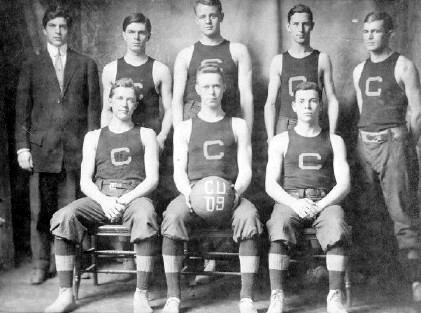 |
| 1908-09 Central University Basketball Squad Seated (l to r): Henry Shelton St. Clair, Captain Louis Seelbach, Hall Brownell Standing: Manager George Lee, Gyfford Collins, Fred Hess, Thornton Mason, Hafford Hay |
State's next game of the season was held in Danville and the Central team was intent on evening the series to get back into contention for the state championship. As with the first game, Central went on a 7-0 run to start the game en route to a commanding halftime lead 25-6. While the Cadets improved in the second half, the deficit was too great to overcome and Central went on win by a score of 35 to 21. A short delay occurred during the game when State's Shelby Post missed a shot when his attempt reportedly landed in an arc light forty feet in the air ! Wayne Plummer again led State's efforts with nine points while Plummer added eight points. Starring for Central was Thornton Mason who exploded for nineteen points (on seven field goals) and Louis Seelbach who scored ten.

[Boxscore] - 1909
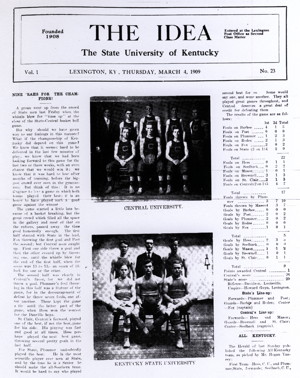 |
State failed to score a field goal in the second half but they stayed in the game on the back of Wayne Plummer who sank seven free throws in the period. Near the end of the game, State held a small lead, but Central center Fred Hess scored three late field goals in the last three minutes to break the game open and give Central the victory 26-20.
After the game, The Idea congratulated the Central team for the win. They noted "It is no disgrace to lose a game in which both teams played their best; it is an honor to have played such a good game against the winner."
Named to the all-Kentucky squad that year by Hogan Yancey on behalf of the Lexington Herald were Central's Hess and Seelbach, State's Plummer to go along with Collins of Georgetown and Moore of Transylvania. State University's student newspaper The Idea disagreed, suggesting that State's Richard Barbee be placed ahead of Collins.
[Boxscore] - 1909 - State Championship Game

Before the 1910 season, Kentucky basketball was at a crossroads with two major issues facing the school. The first dealt with the availability of the gymnasium, an issue which nearly caused the cancellation of the basketball program. In the fall of 1909, the Faculty decided to eliminate men's basketball at Kentucky because there was not enough opportunity for the team to practice, in light of other activities along with physical education classes. A proposal, based on student suggestions, was put forth to floor the Armory, which sat on the Southern flank of Alumni Hall, at a cost of $500. This was eventually done before the new season was set to begin and the "Wildcats" (a moniker that has recently been adopted after the school's military head Commandant Corbusier declared the Kentucky football team had "fought like Wild-cats") team was given new life.
A second issue before the 1910 season concerned the fact that Kentucky State University was without a head coach. The Idea (the student newspaper which later became the Kentucky Kernel) ran an editorial on the situation, especially in light of the fact that Central had gone out and hired a young new coach by the name of M. Beal Banks.
|
"The State University Athletic Association with about ($2,400) twenty-four hundred dollars clear money in the treasury, not able to hire a good coach ! What if we had said this about a football coach, we would have been about $2,400.00 worse off today. Central, a little school of one hundred and fifty students, able to hire a coach and we with three times that many can't do it.... We have won every thing this year so far, and we want to keep our record clean so let's get around the committee and get them to secure a good basketball coach. Members of the Athletic Committee we want a good basketball coach for Beal Banks and his bunch are coming slawn here after blood." |
Banks was hired as the Central coach soon after graduating from Syracuse University where he was a star football player (and earned one letter in basketball).
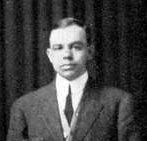 |
Notable also is that when Banks and Sweetland faced each other on the sidelines of the football fields and basketball courts of central Kentucky, this was probably not the first time the two had faced each other. In 1908, Sweetland's Colgate team overcame a heavier Syracuse team (with Banks likely at quarterback) and won 6-0 on the gridiron.
The anticipated showdown between the two new coaches proved for naught, as a week before the game took place, Sweetland was admitted to the hospital with an illness. Robert H. Spahr oversaw the team while Sweetland was ill.
An ominous sign also arrived when DePauw arrived in Lexington to play a game on January 14. Knowing that the Indiana visitors had lost by 20 points to Central a few days earlier, the Kentucky supporters were expecting an easy game, but were shocked when DePauw won handily.
If Kentucky fans were disappointed over the loss of their new coach, they were even more disappointed in the outcome of the Central game. Central manhandled the Cadets 87 to 17 ! The headline in the Lexington Leader read simply "THIS IS AWFUL." This seventy point deficit remains today as the worst loss ever suffered by the Blue and White. The score was 51-3 at halftime so it appears Central let up some in the second half. The Seelbach brothers (Louis and William) were the stars for the Danville squad. About the only setback to Central occurred when Thornton Mason was thrown out of the game for disputing referee (and future Lexington mayor) Hogan Yancey's call.
[Boxscore] - 1910
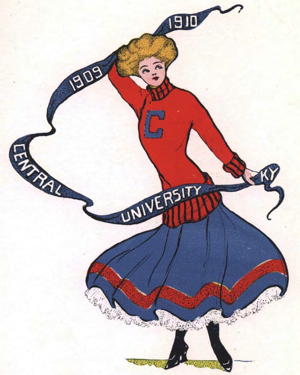 |
Kentucky, although 3-6 at the time, at least had a chance to spoil Central's bid for these titles when they met at Buell Armory in the second game of the three game series. There was hope in the fact that Edwin Sweetland had returned to the sidelines and had enlisted the help of football players such as Richard Barbee and "Red Doc" Rodes to the cause. There was such a large crowd that Saturday evening that the onlookers crowded the sidelines and pushed inside the lines, requiring special floor rules to be enacted.
Despite the home court advantage and the large rooting section, Central once again was too strong and powerful for State. Center Fred Hess, who towered over the Kentucky squad, was the star with six field goals and a foul throw for 13 points. But if Hess was bigger and stronger than the Kentucky opposition, so too were the Seelbach brothers, both of whom were eventually inducted into the Centre College Sports Hall of Fame. When listed in the football program from the previous fall, each Seelbach brother was listed as weighing more than any starting player on Kentucky's football squad. They along with captain Thornton Mason rounded out the scoring for Central, which resulted in a 31-13 victory. Richard Barbee led State University with eight points, on two field goals and four free throws. Polk Threlkeld put in a valiant effort for State as he remained in the game after twisting his ankle in the first half.
[Boxscore] - 1910 - State Championship Game
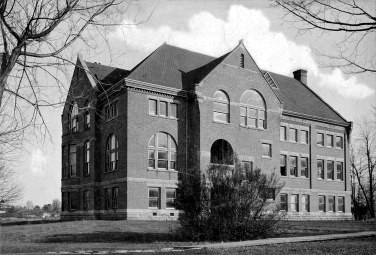 |
| Exterior of the original Boyle Humphrey Gymnasium |
The third game between the two foes was held in the old Boyle-Humphrey Gymnasium. The game was the final contest for both squads that year. Much like the previous two contests however, the State squad had little chance of victory. Central ran out to a 24-7 halftime lead and cruised to a 51-9 final score. The only two points by State in the second half came on a basket by William Rodes, when Central captain Thornton Mason gave him a free lane to the basket and called off his teammates from guarding him. Rodes eventually made the basket, after missing on three attempts!
The only excitement in the game apparently was a fight between substitute Bryne Ellis of State University and Will Seelbach. Ellis had entered the game replacing Jake Gaiser and immediately started roughing up Seelbach. Once the fists started flying, both combatants were tossed from the game.
Central ended the season with a 20-3 record, including a 19-game winning streak to finish the year. Not only did they finish undefeated in the state of Kentucky, claiming the state title for the third straight year, but they also declared themselves "Intercollegiate Champions of the South." For a team which just started playing the sport of basketball five years prior, the school had made great strides.
[Boxscore] - 1910
After the 1910 season, Sweetland resigned due to his health condition. When asked by the student newspaper about his feelings for the student body, Sweetland responded, "I'm leaving Kentucky State: I leave a student body which I love. Some day I hope to carry the Blue and White flag to a Southern championship." Despite the impression that Sweetland would take an extended break from coaching, he soon accepted a less strenuous position coaching the rowing crew at Wisconsin but was soon laid up again with health problems and never assumed coaching duties in Madison.
In Lexington, Harold J. Iddings arrived at the last moment to take over the open head coaching position for the 1911 season. Iddings and State University finished with a 5-6 record that year. No game was played against Central, likely due to the fallout from a football dispute over the amount of money the visiting Central squad was to receive. The rivalry between the two schools extended to all sports, with the major emphasis being football. Basketball was a lesser attraction at the time. If anything, it served as a chance for redemption as many of the football players on both squads also played basketball during that era. The annual football game between the two schools was highly anticipated and was well attended. So much so that it served to fund the football program and in turn kept afloat virtually the entire athletic department's budgetary needs. For example, that year State University enjoyed a windfall of $2886 on the football game, more than enough to handle the $600 plus expenses Central received and enough to put the entire football season on a sound financial footing.
By the following year, Edwin Sweetland did return to Lexington to try to make good on the pronouncement he made when he left; and the prospects looked promising the second time around. Kentucky had a good group of players with returning senior Jake Gaiser to go along with strong center W.C. Harrison and a trio of talented players in Derrill Hart, Roscoe Preston and Brinkley Barnett. Perhaps more important to State's fortunes was the loss by Central of the Seelbach brothers along with Fred Hess and Thornton Mason, all of whom had helped Central dominate the series for a number of years and gave Central three straight state titles. The State supporters were hungry for a victory, after not having beaten Central on the hardwood for nearly three years. The student newspaper, The Idea, publicized the match as follows: "Next Friday, January 12th, State will meet her old-time rival in all branches of athletics, Central, on the basket-ball floor at Danville. The rivalry which all the old students have frequently seen manifested, and which the new students saw manifested in the foot-ball game with the Crimson and Blue last year, still exists, and the lovers of good, clean athletics will do well to see the game next Friday at Danville."
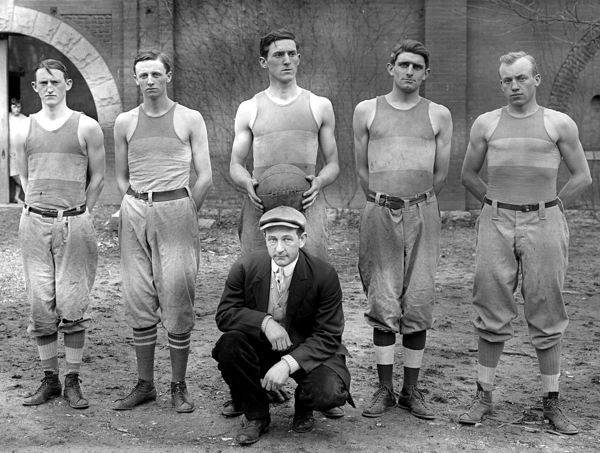 |
| 1912 Kentucky State University Starting Five Standing (l to r) : Brinkley Barnett, R.C. Preston, William C. Harrison, Derrill Hart, Jake Gaiser Kneeling: Team Manager Giles Meadors |
The game itself saw the Cadets finally break through for a victory, and it was convincing. Central's center David Coleman scored the first basket, but State settled down and built a 12-6 halftime margin. They expanded on this lead in the second half and came away with a 32-13 victory on Central's home court. Gaiser scored five field goals for ten points to lead the Blue and White. Brinkley Barnett added eight points for the victors. Hubert Blakey led Central with seven, the only Central player to score more than two points.
When the two teams met a few weeks later, Kentucky State University was still undefeated. They blew past Central at the Armory 52-10, despite using substitutes for most of the second half. Gaiser, Barnett and Kimbrough all scored ten points apiece to pace the Wildcats. No player for Central scored more than four points.
[Boxscore] - 1912
[Boxscore] - 1912
After the second game (both blow-out victories by State University), Central refused to play a third game, with Central's coach claiming the team from Danville had "gone to pieces". Playing the game had been agreed to before the season begun but a date had not been scheduled. The sticking point, according to State's viewpoint, was the sum of money they would receive for the game, which was to be held once again in the Armory. An editorial in the Kentucky student paper The Idea (published February 15, 1912) gives a good synopsis of the situation.
|
Why are we in the Kentucky Athletic Association? Will some one please give a good reason? We would certainly like to hear one. What is the K.I.A.A.? It is an association of Kentucky colleges which gives Central, Georgetown and Transylvania a throttle hold at our throats. We think this definition covers the ground. Certainly all students who have been in this institution for more than two years believe that. What, you ask is our grievance now? Merely this: We had a contract with Central to play three basket-ball games, one of which was to be at Danville and two of which were to be here. We have played two games - one at Danville and one here. We were to decide when the other game was to be played, subject, of course, to ratification by Central. The contract stated a sum of money to be paid by us to Central for each trip to Lexington. We decided to play them Saturday night. They seemed to have no objection to the date - but (and here is the rub) they say we must give them more money. They demand almost twice as much as the contract called for, and say they won't play us unless we accede to their demands. ..... The solution of this whole matter is that Central, Transylvania and Georgetown , having always banded together in the K.I.A.A. against State know that, with Berea and Wesleyan taking no active part, they can do anything they care to - break contracts, declare players ineligible, etc. - and so long as we remain in the association, we can not help ourselves. ...... In the S.I.A.A. when one institution breaks a contract with another institution, the offender is black-listed and the rule is strict. We are in the S.I.A.A. Why do we need to stay in the Kentucky association and be the punching bag of these smaller institutions? It seems to us that it is about time to get out. |
The 1912 Kentucky State University team finished the season a perfect 9-0. In light of the fact that all other Kentucky teams had at least two losses, this gave State the confidence to claim themselves the undisputed champions of Kentucky and even make a claim on the mythical southern championship, given their victories over Tennessee and Vanderbilt. It was by far the most successful State squad to date and made Sweetland a conquering hero on campus.
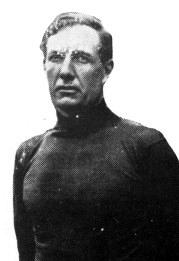 |
In response to Kentucky's move, the K.I.A.A. went ahead and effectively placed a ban on other member schools from competing against State. The K.I.A.A. also claimed that upon leaving the conference, State University reneged on fees which were owed. [Later that year, the S.I.A.A. ruled on the case (with Central's Dr. Frank Rainey acting as prosecutor against Kentucky) but found that the offenses charged were due to negligence on the part of the Athletic Committee, but not to any intentional violation of the rules. The result of the investigation was that coaches and athletic directors could no longer hold a seat on the faculty athletic committee or play a role in the eligibility of student-athletes, but State University could continue to participate on the athletic fields.]
The ban against playing K.I.A.A. schools was a blow to Kentucky as they lost their chief money-maker in the annual Thanksgiving football game against Central. In the fall of 1912 State attempted to negotiate a game anyway, under S.I.A.A. rules which both schools were also members of, but to no avail. Eventually the Cincinnati YMCA was used as a last-minute replacement. Although Kentucky won easily, 56-0, the game was a disaster from a financial standpoint. (Thereafter, the Tennessee Volunteers became the annual Thanksgiving opponent.)
During the following few years, the ban against play between the schools remained in effect. That time period saw major changes at both schools. At State University, Sweetland resigned under the cloud of a bizarre arson investigation aimed at one of his assistant football coaches. This marked a series of interim and short-lived coaching changes and mediocre records which typified the program for much of the next fifteen years. The school itself was still growing (up to an enrollment of 1500 students by 1915) and they soon became officially known as the University of Kentucky in March 1916.
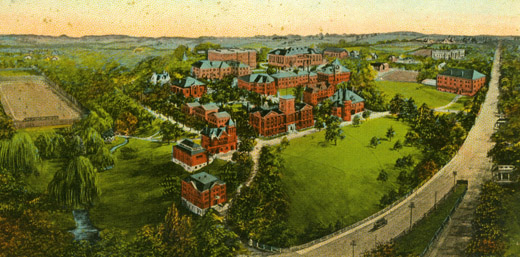
Central also lost their coach, M. Beal Banks, who left for a job at Ohio Wesleyan. Strangely, on his first team for Wesleyan were captain Ray Higgins and Orville Littick, both of whom later found themselves as head coaches at Centre. Banks eventually turned up over a decade later at Tennessee. Shades of Edwin Sweetland's crew team at Banks' alma mater Syracuse, it was under Banks' watch in Knoxville that his football team broke out orange jerseys for the first time, a tradition that continues to this day. But Banks' most notable accomplishment at Tennessee is likely his hiring of Robert Neyland as an assistant football coach, and then conveniently stepping aside which gave Neyland the opportunity to build a football powerhouse in Knoxville. Central also underwent a name change during that time, reverting back to its original name, Centre College.
The stalemate from playing in-state schools lasted for a number of years and it did indeed help spur Kentucky to expand its horizons, not only to the South where the S.I.A.A. was established but to other schools in the Ohio Valley. Not until 1916 did State once again begin playing K.I.A.A. members. This break came about when the fledgling Louisville program wanted to join the K.I.A.A. but also maintain its own budding (and lucrative) rivalry with State University. A deal was brokered whereby State University agreed to pay off its longstanding dues to the conference in return for a lifting of the ban. The 1916 season saw Louisville, Georgetown College and Centre on Kentucky's schedule. Transylvania, Kentucky's bitter rival from across town, would not return to the schedule and in fact the two would not face each other on the hardwood (or the gridiron) for over 100 years.
The revival of the dormant series between the two rivals occurred February 15th, 1916 in the new Boyle-Humphrey Gymnasium. This gymnasium was built in 1915, a year after a newly built gymnasium burned down in November 1914, a day before it was to be opened for use for the first time. The fire started under mysterious circumstances in the basement of the building. Professor M.C. Knapp was sleeping upstairs and was the first to discover the fire as smoke rose to his room. He sounded the alarm while the flames were still small and manageable but a series of mishaps allowed the flames to spread. First the fire department was instructed to Breckinridge Hall rather than the gymnasium. After that mistake was corrected, the water pressure was found to be too low as no one had notified the engineer to increase the water pressure, nor was word sent to the railroad yard to stop using the water. By the time these issues were sorted out, the flames had destroyed the newly built gymnasium and also engulfed the nearby Sayre Library. One piece of good fortune was that the books had already been moved to the new library.
The 1914 gymnasium was built on the same spot after the original Boyle-Humphrey burned down in 1912. The loss of the original Boyle-Humphrey was just as well for the Centre basketball squad since the original gymnasium never had adequate room for the players to space themselves on the floor and there was little in the way of accommodations for spectators. With the Danville Rink being difficult to reserve, the team had to rely on the gymnasium at the women's Caldwell College to practice. The situation limited the number of big-name opponents Centre could invite to their campus, given that there was no way to guarantee sufficient appearance fees. This in turn limited Centre's schedule.
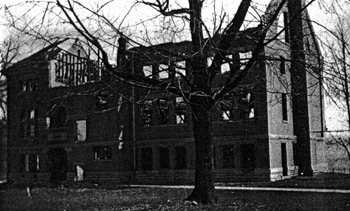
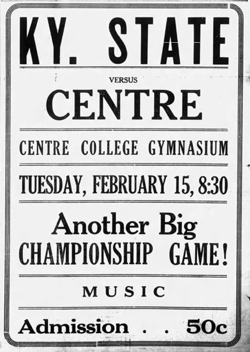 |
Two weeks later, Kentucky again beat Centre 38-14 to celebrate 'Leap Year Night' at the Woodland Auditorium, located in Lexington. The game was rough with many fouls called and two players, Captain Karl Zerfoss of State and Veach of Centre, being tossed from the game after acquiring the requisite four fouls. Derrill Hart once again led the Wildcats with 15 points. Robert Ireland added 14 on seven field goals while George Gumbert played well on the defensive end. Freshman Ed Diddle led Centre with 11 points, the majority on foul shots.
[Boxscore] - 1916
[Boxscore] - 1916
Although the new Boyle-Humphrey gymnasium (capacity 1000) failed to give Centre much luck in beating Kentucky, it did prove useful in another way as the state's first High School tournament was held on the Danville campus in 1916. Henderson won the title over Somerset 37-14. On that Somerset team was Alvin "Bo" McMillin, "Red" Weaver and James "Red" Roberts. All eventually enrolled at Centre. In fact Somerset became a regular in the high school tournament, finishing as runner-up in 1917, 1918 and 1919. Other Somerset players such as future U.S. Senator John Sherman Cooper and Madison "Matty" Bell ended up migrating to Centre for their studies, and at least in some cases, the tournament provided them an opportunity to visit the Danville campus and make a favorable impression on their college destination.
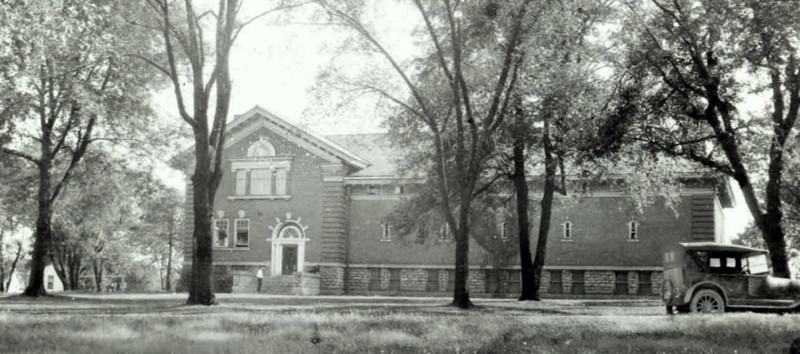 |
| The new Boyle-Humphrey Gymnasium (later renamed Sutcliffe Hall) |
The first two years (1916 and 1917) were unofficial high school invitational tournaments. However the 1917 event highlighted the need for greater regulation and organization to ensure a successful tournament. The issue was the eligibility of Henry C. Thomas, who was enrolled and played as a high school student at powerful Lexington High at the same time he was also enrolled at the University of Kentucky (as a high school student). Nevertheless, Lexington High was ruled ineligible to compete in the tournament. Owensboro won that tournament with a 12-9 victory over Somerset.
After the tournament, birth was given to the Kentucky High School Athletic Association (K.H.S.A.A.) The first 'official' K.H.S.A.A. tournament was held in 1918, once again at Danville's Boyle-Humphrey gymnasium. Future Kentucky star Bill King scored 10 points to help give Lexington High (coached by former UK star Derrill Hart) a 16-15 victory over Somerset, which featured future Centre players Roberts and Cooper. Joining King and Roberts on the all-tournament team were among others future Kentucky players Bob Lavin and A.T. Rice from Paris, KY.
As the high school tournament began to better establish itself and began to attract teams from farther and farther reaches of the state, it became more clear how important hosting the tournament could be as a key recruiting tool. Due to lack of attendance at the 1918 tournament in Danville, which only attracted 300 spectators, a decision was made by the K.H.S.A.A. to move the site of the 1919 tournament to Lexington and UK's University Gymnasium. Lexington High once again defeated Somerset in the finals. Although the gymnasium was not an upgrade in facilities by any means, it did attract capacity crowds and the tournament remained in Lexington until 1942. During the era, the University of Kentucky benefitted greatly as many future Wildcat players got their first taste of the college campus while competing in the high school tournament.
Another important development during this time occurred on the football front, but soon affected basketball as well. Centre had hired Robert "Chief" Myers as football coach. A 1906 graduate of Central, he had been a science teacher and coach of North Side High School in Fort Worth, Texas where he had cultivated an outstanding football program. Selling his players on the virtues of higher education, and especially of Centre, many of his players headed East with the intention of enrolling there. For some, this transition occurred by way of Somerset KY where a local committee banded together to provide accommodations for these Texans as they prepared for entrance into college. Included among this bunch were Alvin "Bo" McMillin and "Red" Weaver among others.
With Myers installed as the new head coach at Centre, it ensured that McMillin and others found their way to the small school also. But part-way through the 1917 season, it became clear to Myers that a better coach was necessary to instruct such a talented young group. Former major league baseball player and collegiate football star and coach Charlie Moran was solicited the position when he was travelling through town to visit his son, who was trying out for the squad. Moran, who also had begun a career as a major league umpire, agreed to stay in Danville and assume the position as head football coach at Centre as his 'off-season' job from baseball. Centre was well on its way towards creating a football powerhouse.
 |
| Charles Schrader |
Centre held a 17-15 halftime advantage, however Kentucky turned up the defensive heat in the second half and allowed the visitors only four points in the second half, running away with a 31-21 victory. Senior Charles "Dutch" Schrader of Philadelphia led Kentucky with 13 points, nine coming on free throws. One of the free tosses came after a miss in which Centre guard Ed Diddle called out "watch your foot" just as "Dutch" was ready to toss the ball. Robert Hinton, coach of Georgetown College who was acting as referee that night, thought the remark unsporting and allowed Schrader a makeup toss which was good. "Dutch" Longsworth added to Kentucky's ledger with ten points on five field goals. Diddle, who was Centre's designated foul thrower, led his team with nine points, seven of which came from the free throw line.
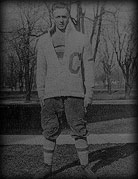 |
[Boxscore] - 1917
[Boxscore] - 1917
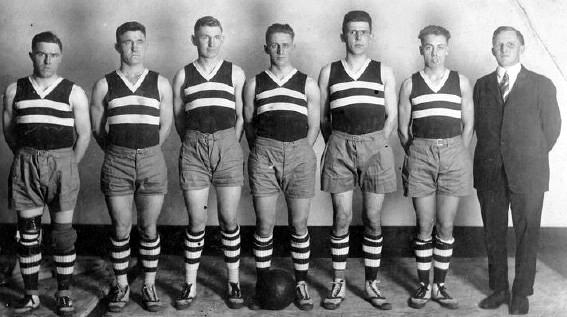 |
Allen Davis, "Bo" McMillin, Madison Bell, Ed Diddle, Thomas Tate, Julian Walden, Coach Theodore Gronert |
The year 1918 found the United States firmly in the throes of of World War I and it had affected Central Kentucky just as badly as other parts of the country. Kentucky's squad saw only two returning players, regular Patrick Campbell and "Big" Ben Marsh, while many of the others were off to the war. The University of Kentucky, with its history of military training, transformed itself almost completely into a place for military preparations. Centre College too set up a unit of the Student Army Training Corps on its campus in the fall of 1918. On the south side of Louisville, Camp Zachary Taylor was erected as one of the largest military camps in the nation. The student ranks from all schools were depleted as young men went into the armed services.
When the Spanish influenza of 1918 appeared (one of the worst epidemics in history with 675,000 Americans and 30 million others dead worldwide), both the UK campus and especially Camp Taylor were hit hard. This outbreak was unlike typical flus in that it targeted men and women in the prime of their life. At one point, the demand was so great for hospital beds that the Gymnasium was converted full time into a medical ward for a short time. The football game between the two schools was called off in 1918 due to the influenza outbreak, although many Centre supporters considered it to be simply an excuse on the part of Kentucky looking to duck the loss.
Despite the hardships endured due to the war effort, the loss of players who enlisted in the military and the health crises, both Kentucky and Centre fielded basketball teams that winter and they both fought for the state title. Theodore Gronert was a 1908 graduate of the University of Wisconsin (with a Masters in 1915) and he brought the highly regarded 'Wisconsin style' to Centre. Meanwhile, Kentucky's athletic director Stanley Boles coached the Wildcats, after a succession of former players were charged with the job in previous years.
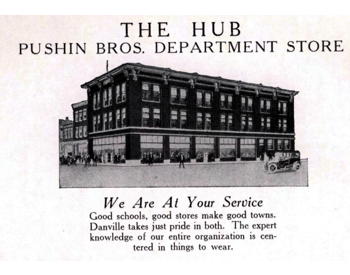 | 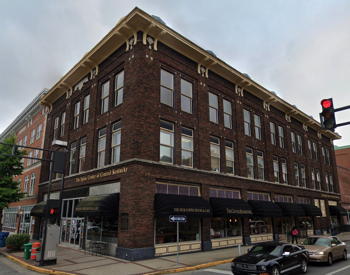 |
The first game was held in Danville and was a tight affair. With just a few minutes remaining, the score was knotted at 21-all and it looked like the outcome would come down to the wire. However Bell, Diddle and Tate exploded at the end and the Colonels ran off four field goals in the final two minutes to give Centre the victory 29-21. Ed Diddle led Centre with nine points while Madison Bell added eight. Freshman Henry C. Thomas led Kentucky with thirteen points.
[Boxscore] - 1918
The following game was held at Kentucky's Gymnasium nearly a month later and UK supporters were growing restless. Centre had won two straight games against the Blue and White and another victory would virtually assure the state championship for the boys from Danville. Before the game, the Kentucky Kernel set the stage and tried its best to rally the students. "The duty of every student is plain. There is space for almost the whole student body in the gym, and where room is lacking some crowding will be permitted. .... Centre has had opportunity to crow over U.K. twice in the last season, and three times is, in the words of the prophet, 'too dern much b'gosh.' This time Centre must meet defeat."
The game was a classic and was tight throughout. According to the Lexington Herald's colorful beat writer Tom Underwood, the two teams were as evenly matched as "two ears of corn." Kentucky went ahead early but led by Alvin "Bo" McMillin, the star of the Centre football team who had beaten UK the previous fall on the gridiron in grand style on a drop-kick for a 3-0 victory, Centre came back and the halftime score was 8-7 in favor of the Wildcats. In the second half, McMillin was tossed out of the game by Referee Hinton for kneeing Arthur Bastin. But Centre forward Allen Davis began to heat up and took up the slack for the departed McMillin. The score was tied at 14-all at the end of regulation.
The game went into overtime and saw each team score two baskets to tie the game at 18-all. A second five-minute overtime period was called for and this resulted in a 20-20 tie. Finally in the third overtime, Kentucky's Thomas scored the only goal near the end of the period to give Kentucky the victory. The crowd went wild and many of the spectators and participants considered it the best game they had ever witnessed.
The game was the first triple-overtime game played by UK, and it became one of only three in UK history, the most famous being the 1957-58 game against Temple where Vernon Hatton was the hero. Henry Thomas led Kentucky with twelve points while Arthur Bastin added six. Allen Davis led Centre with ten points.
[Boxscore] - 1918

Kentucky was 9-1-1 that season (the tie came against Kentucky Wesleyan when a scoring error was discovered after the game) but still needed a victory over Centre to secure claim to the state championship. In what was likely the first post-season contest for UK ever, a third and deciding match was held in the city of Louisville at the St. Xavier High School's recently built gymnasium.
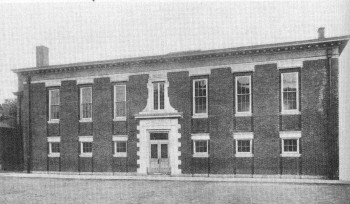 |
The match was a fast and exciting one, although Centre held the edge in the scoring department as they posted an 8-4 margin at halftime and went on to win the game 24-12. The Louisville Courier-Journal described the action as "fast dribbling on both sides and the making of difficult baskets featured the contest." The UK yearbook, The Kentuckian claimed "...the Wildcats slipped and loosened their claws from the mythical banner and State Championship, when Centre took our measure in a fast and aggressive game that really demonstrated their worth."
With the victory, Centre was able to claim the Kentucky State title that year. Centre's forwards Allen Davis and "Bo" McMillin were the stars, collecting ten points and eight points respectively for the victors. Henry Thomas once again led Kentucky with six points while Arthur Shanklin added four points on two long field goals.
[Boxscore] - 1918 - State Championship Game
The all-state team (as named by UK's coach and athletic director S.A. Boles) at the end of the season saw all five positions held by players of either Centre or UK. Kentucky's Henry Thomas and Arthur Bastin were named to the starting five, along with Allen Davis (forward), Thomas Tate (Center) and Madison Bell (guard) from Centre. With the only senior being captain Patrick Campbell, Kentucky appeared to be in good shape for the following year, however Bastin decided after the season to enter the work force. He did not return to school the following year.
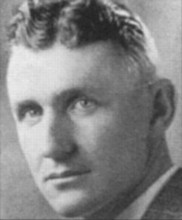 |
Hubert Blakey, a transfer from Centre who had last played for the school as a sophomore in 1913, was hoped to be available for the game however his credits didn't show up in time and he was not able to participate. Blakey eventually joined the Wildcat team the following year. Kentucky was without the services of their captain, Joseph Dishman, who had contracted influenza days before the match. Centre was on their home floor and they ran out to a 25-9 halftime lead using good teamwork to their advantage. Undaunted, the Wildcats mounted a comeback in the second half and outscored the home team 21-13 in the second half, however it wasn't enough to claim victory. Allen Davis scored 16 points for the victors while Bo McMillin added 12. Maysville native John Everett was the high point man for UK, with eighteen points to his credit.
The followup game in the UK Gymnasium was billed as the last chance for any state team to check the Centre juggernaut, but it was not meant to be. Despite a strong effort by UK, the boys from Danville blew by the Wildcats 21-10. Madison Bell connected on seven field goals to lead the charge. No player for Kentucky scored more than four points. Centre went on to finish the season undefeated, claiming not only the state championship (their third in a row) but Southern Champions, with their victories over Vanderbilt and Tennessee.
[Boxscore] - 1919
[Boxscore] - 1919
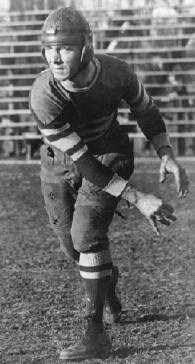 |
McMillin's fame was not just spreading through the Commonwealth but throughout the country as well. In 1920, East Coast newspapermen, intrigued by the football exploits of the "Praying Colonels" (a moniker adopted after Centre utilized a timely prayer in their game against Kentucky on the gridiron) invited the football squad to Boston to meet the mighty Harvard team. Centre lost the game, but McMillin vowed to return one day. They did so the following year and when McMillin and crew scored a 6-0 victory in 1921, mighty Harvard had lost for the first time in five years. McMillin and Centre became a household name. The upset victory was named by the Associated Press as the greatest upset in the first half of the twentieth century and to this day, C6H0 still stirs the imagination of those familiar with its meaning. McMillin's fame was such that a book First Down Kentucky loosely based on McMillin's life was published and proved hugely successful throughout the nation.
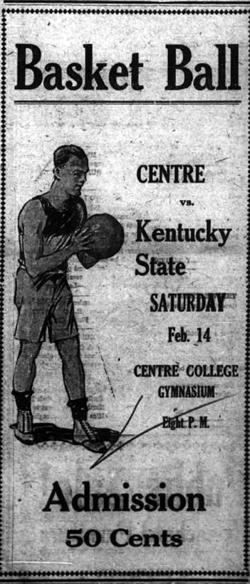 |
On February 14th, Kentucky travelled to Danville to face Centre and witness first-hand the reemergence of "Bo" McMillin. McMillin, whose strong suit was not in the classroom, had been sitting out three weeks on academic suspension, but returned just in time for the Kentucky game. With Basil Hayden and transfer and former Centre player Hubert Blakey keeping Kentucky close, Centre held only a 15-10 halftime lead. However in the second half, Centre started hitting on all cylinders and soon the Wildcats were swamped. Even the insertion of fresh Wildcat substitutes could not turn the tide and the Colonels won the game 44-15. Bo McMillin led the charge with 15 points while Madison Bell added 14. Sophomore Basil Hayden, who himself had transferred to UK from Transylvania, led the Wildcats in scoring with seven points.
The second encounter with Centre was the final game of the year. It was held in the University Gymnasium and the outcome was much closer than the first, despite Kentucky missing two of their best players. The game went into overtime before Centre prevailed 20-18. It was very physical and with the clock winding down in regulation of a tight game, "personal fouls were numerous, football tactics were brought into play and angry words passed," according to the Lexington Herald. The Kentuckian yearbook made note of Kentucky's defensive efforts, "It was a hard-fought game and the Centre "All-American" football men were unable to pull any classy grandstand playing, due to Kentucky's close guarding. "Bo" McMillan (sic) had his pride dragged in the dust by the close guarding of "Dutch" Burnham and failed to scintillate as on the gridiron. Mater (sic) Bell, undoubtedly the best man on the Centre team, was greatly hampered by the good work of Jimmie Wilhelm and was held down six points."
The regulation ended in a 14-all tie. In the opening moments of overtime, Centre went ahead on two McMillin field goals and William Walden soon added another to give Centre what looked to be an insurmountable six-point lead. However Kentucky's Basil Hayden scored two late baskets of his own and the Wildcats were back in the thick of the game. This was as far as the rally got, however, and time ran out on UK's upset bid.
Despite the close loss, the editors of The Kentuckian appeared satisfied with the effort. Although captain John Everett and senior scoring ace Hubert Blakey were out of action due to influenza, Kentucky was able to split a series of games with Tennessee in Knoxville and take Centre to overtime to close out the season. Crowed the yearbook staff, "The basketball season for the year 1920 had not closed until Tennessee had bowed beneath the yoke and Centre's pride had been crushed. Thus we say the tossers of the Blue and White have not played in vain."
[Boxscore] - 1920
[Boxscore] - 1920
As the 1921 season rolled around, the talent levels of the two programs began to even out. Centre had lost their floor general Ed Diddle to graduation along with their shooting ace Madison Bell. Diddle became a high school coach but soon went on to coach at the Western Normal School for Teachers which eventually become Western Kentucky University. He became a Hall of Fame coach and one of the most beloved collegiate coaches of all time. Bell, despite pressure to stay at Centre for another year, left with athletic eligibility remaining to enter law school. He eventually went into coaching football, leading Texas Christian, Texas A & M and Southern Methodist at various times during his career. His first year at SMU in 1935, he won the national title.
Kentucky's young squad was beginning to gel under now second-year coach Buchheit. Led by Basil Hayden along with freshman sensation Bill King of Lexington, diminutive Bobby Lavin and transfer Paul Adkins (who had played at Centre and then transferred to his hometown Williamsburg College before transferring to UK) among others, the Wildcats were an undefeated 6-0 prior to their match with Centre, which was also undefeated.
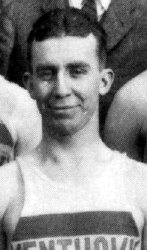 |
Bobby Lavin, the hard-charging little guard for UK, tore ligaments in his shoulder in the first half and had to leave the game. George "Rabbit" Maver of Centre was the star of the game, scoring 21 points for the Colonels. Maver came to Centre from Long Island N.Y. and was considered one of the best players in the South at the time. William King paced UK with 13.
The second game was held at Kentucky's gymnasium and a victory for UK was critical to the players, fans and students, who had suffered six straight defeats to the Colonels dating back to the 1918 season. Centre came into the game undefeated while Kentucky's lone defeat had been the two-point loss to Centre ten days earlier. Given that this was considered the best Kentucky squad in many years, perhaps of all time up to that point in the program's history, a loss would have been devastating while a victory would potentially turn around a program which had been struggling to stay competitive with its tiny neighbor to the South.
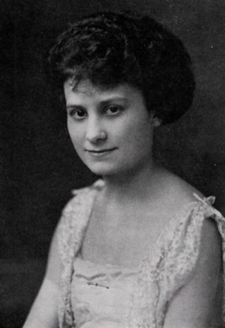 |
The Danville Messenger reported: "It was estimated that two thousand people were turned away from the doors and about one hundred people from Danville were unable to gain admittance, and waited in the hall, getting reports from door keepers on the progress of the game. The only Danville person favored by being admitted without a coupon for a seat was Miss Dorothy Mahan, the Queen of the Centre Athletic Carnival of 1921. Even she was not admitted until the Centre boys refused to play until she was brought in and given a seat."
Kentucky won the game 20-13, however it was closer than the score indicated. Both teams fought hard and played exceptionally well. Although there were times when the play got rough, overall the contest was very clean and very few fouls were called. It was remarked that the game was as close an exhibition of "scientific basketball" (a term of the day used to describe the theory of how basketball should theoretically be played as espoused by basketball pioneers such as Walter "Doc" Meanwell and others) as had been seen all season.
Kentucky held a 11-7 lead at halftime. Centre came back in the second half with two field goals to tie the score but after William King hit a free throw to put UK back in the lead, Kentucky never looked back. Basil Hayden scored eight points to lead UK in scoring, while King added six and Paul Adkins added four. The Herald didn't single out a particular player as the star, preferring to laud the work of Coach Buchheit in preparing his squad. "Rabbit" Maver led Centre with seven points. The Centre yearbook noted that Captain Norris Armstrong was not able to play in the game due to an injury sustained against Georgetown, and cited this as a factor in the loss.
[Boxscore] - 1921
[Boxscore] - 1921
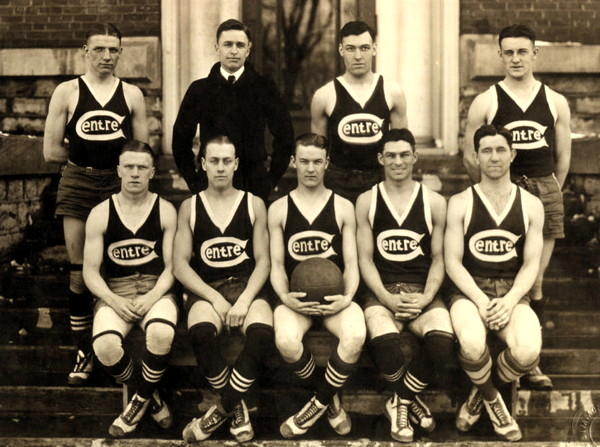 |
Seated (l to r): George Maver, Julian Walden, Norris Armstrong, Eugene Bedford, Bo McMillin Standing: Ches McCall, Coach Charles McDowell, Boyce Flippin, Unidentified |
After many years of the unfinished song sitting on the shelf, Troy Perkins, an associate of Lampert's at UK, happened to hear Lambert playing the melody one day and inquired as to its background. Perkins took up the challenge to provide the words and soon the song was complete. It met with great approval of the UK students and fans. (based on information found in the 1949 Kentuckian Student Yearbook.) On, On, U of K ... On, on, U of K, we are right for the fight today, |
The victory put the claim of a state title in limbo. Given the precedence of previous years, a third game would normally be scheduled to decide the victor. The Centre coach, former Centre player Charles McDowell, insisted on a third game to be played on a neutral floor, preferably in Louisville, as was done in 1918.
According to the Danville Messenger the challenge was made immediately after the game was completed: "Kentucky State, we challenge you to a game, to play off the tie, to be played on a neutral floor for the championship of Kentucky and the South. If we win this game and we believe we can, then we are ready to start on our Eastern trip looking for wider fields to conquer and greater honors to win."
Athletic Director S.A. Boles however declined, citing that there was no room in the schedule for a third game. Indeed there was another event which demanded time in the schedule.
A new dawn was approaching in college basketball and it would irreparably upset the ways of the past, in Central Kentucky and beyond. Based in large part on the work of Georgia coach H.J. Stegeman and others associated with the Atlanta Athletic Club, a post-season tournament was planned for S.I.A.A. members throughout the South. The tournament was to be held at the Atlanta Municipal Auditorium with the champion being able to lay claim to the "Championship of the South." This was one of the first conference tournaments ever held in collegiate basketball, and most likely the largest.
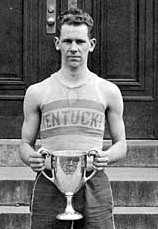 |
Basil Hayden |
Meanwhile, as Kentucky prepared to leave for Atlanta, the seeds of a resolution to the state title question were already being sown. In an editorial, the UK student newspaper Kentucky Kernel argued that if Kentucky won the tournament in Atlanta, there would be no need to play Centre again. Said the article "The State Championship is not claimed by any member of the Athletic Council and the Louisville paper makes a misstatement in so stating. All dope, however, gives it to Kentucky, and Hinton of Georgetown, who refereed the last game, stated that Centre was out played in every stage of the game. It seems then Centre is the one who is squaking like a spoiled baby, NOT Kentucky. There will be no need of playing Centre if we win the S.I.A.A. tournament. Centre has lost, knows she has lost, why don't she be a sport and take her medicine like a man."
As it turned out, Kentucky did make it to the finals of the inaugural tournament, where they upset the favored Georgia Bulldogs 20-19 on a clutch free throw from Bill King. Basil Hayden was the star of the tournament, and largely based on his efforts in Atlanta, he earned All-American honors, the first Kentucky basketball player to be so named.
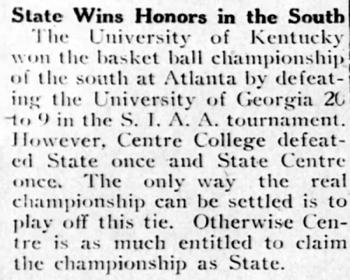 |
| Richmond (KY) Daily Register (March 3, 1921) |
Centre, which never got to play a third and deciding game against their old foe, was left out in the cold; in more ways than one as it turned out. While the tournament was in progress in Atlanta, representatives from the various participating schools met and the Southern Conference was formed. Kentucky accepted an invitation to the conference, which at the time was limited to 16 teams and included many of the universities which would go on to form the Southeastern and Atlantic Coast conferences. Centre was not a part of the newly formed conference.
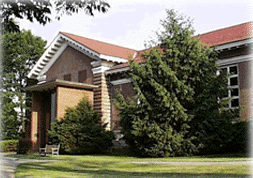 |
| (New) Boyle Humphrey gymnasium |
In the first game of the series that year, Kentucky travelled to the Boyle Gymnasium and won on Centre's floor for the first time in five years. The game was close through the first half and much of the second before Kentucky widened the margin at the end. Just before the half expired, the referee disallowed a Centre field goal. Coach McMillin argued the call and this delayed the game for 30 minutes. According to the Kernel, "(Jimmie) Green of Centre shot a goal just ten seconds before the close of the first half which was decided illegal by Referee Jamison who thought Green to be out of bounds. After the combat it was decided that in case the game was won by Kentucky by two points or less the decision on the play in question would rest with the rules committee, and in case two points separated the teams and would give the Colonels a tie at the close of the game, an extra five minutes of play would be added." This scenario may have been required as Centre rallied to come within two points, 20-18 midway through the second half. However at this point, Paul Adkins and Bobby Lavin took the game over and Kentucky rolled to a 28-21 victory.
[Boxscore] - 1922
Kentucky went on to win the second game in what was Lavin, Hayden and Adkins' final game on their home court. The crowd in the gymnasium was the largest since the memorable Centre game the year before and the team did not disappoint. The first half was tight, as Centre was outclassed, but never out-fought and Kentucky held only a 17-13 halftime lead. To start the second half, Centre tightened the margin to two points, 18-16, before UK exploded with 14 straight points to blow the game wide open. Soon after, the "wrecking crew," as the second team was affectionately referred to, entered the game and held up the score over the Centre substitutes who had also entered the game. The final score was Kentucky 40, Centre 23.
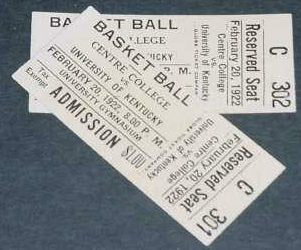 |
| Tickets from the Game |
[Boxscore] - 1922
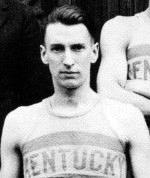 |
| After the season, "Bo" McMillin left Centre to assume his lucrative football coaching position at Centenary College in Shreveport Louisiana. He was replaced at Centre by Jim Kendrick. The Centenary basketball squad actually found its way to Lexington the following season for a basketball contest. The Kentucky Kernel claimed at the time that McMillin was the coach of the hoops squad also, although he personally didn't make the trip back to Kentucky in order to care for his ill wife Marie Miers. Miers was McMillin's high school sweetheart who he had married the year prior. The official Centenary records, however, don't list McMillin as coaching the basketball team that season (or any season for that matter).
When Charlie Moran resigned his football coaching position at Centre in 1923 under duress, there was talk of McMillin returning to his former school. However by that time, attitudes on the Danville campus were changing. Athletic success had greatly improved Centre's name recognition around the country, however at what cost? It was felt by many at the school that exceptions and lax standards which allowed athletes to remain in school were a detriment to the academic reputation many had worked so hard to achieve. At one time, Woodrow Wilson, prior to becoming president of the United States, remarked "there is a little college down in Kentucky which in sixty years has graduated more men who have acquired prominence and fame than has Princeton in her 150 years." Many Centre alumni much preferred this brand of publicity over the type found on the sporting pages.
McMillin went on to coach at Geneva College and Kansas State before finally settling down for an extended career as the football coach at Indiana University, with later stints in the professional ranks. In late 1945, the Kentucky football program was looking to fill the head coaching position in Lexington. Then commissioner of Major League Baseball Happy Chandler recommended McMillin, suggesting he was the "greatest coach in the game today," and further recommended that UK basketball coach Adolph Rupp be named as athletic director. In January of 1946, reports suggested that "Bo" had agreed to take on the position in Lexington as head of the Wildcats, but only if he could obtain a release from his contract with IU. This did not occur however. With all the established coaches apparently taken, Kentucky had to 'settle' for a young coach by the name of Paul "Bear" Bryant. |
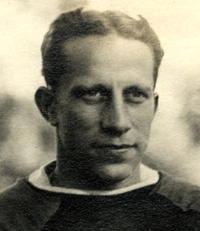 |
Despite losing to out-of-state foes Alabama, Tennessee and Centenary, Centre had gone undefeated against in-state competition and thus claimed the state title. The Colonels were invited to the S.I.A.A. tournament in Atlanta where they beat Clemson but lost to Georgia Tech 34-26 in the second round. Kentucky, with a record of 3-10, was not invited.
While at the time it may have looked like the Centre program had the upper hand in the series, help was on the way in Lexington in the form of a group of sophomores from the state champion Lexington High Blue Devils. This team, under the direction of John Barclay, also entered the national prep tournament in Chicago and came away the victors. This infusion of talent to the Wildcats to go along with a gradual de-emphasis of big-time athletics at Centre led to a decided shift in power between the two schools. As it turned out, 1923 was the last year Centre tasted victory against Kentucky on the hardwood.
[Boxscore] - 1923
[Boxscore] - 1923
The following year, the scheduled dates for both games between Kentucky and Centre were moved in order to accomodate what was anticipated to be the opening of UK's new home-court, Alumni Gymnasium. The game in Danville was postponed until February 9th (the original date of the game in Lexington) and the return game was moved back until February 21. This was in hopes of dedicating the new arena against the Colonels. (When permanent bleachers were added to a revamped McLean Stadium (aka Stoll Field) in 1924, the football game used to dedicate the stadium was the one against Centre.)
With a capacity of 2,800 people, the gymnasium was a huge improvement from the confining University Gymnasium or Buell Armory. For one thing, it allowed Kentucky to have a regulation size court, something it had not had before. For another, it got them out of using gyms which were considered to be unsafe for spectators. Given the size of the new building and the cost overruns, many considered the building a white elephant. However no doubt encouraged by the huge crowds which turned out for games against Centre in the past (and the threat of the high school tournament moving away from Lexington), the project went forward. Despite the adjustments to the basketball schedule, construction delays prevented the collegiate matches from occurring in the new building that year. The contractor could not lay the brick in January as planned due to below-freezing temperatures and the project was behind schedule. Eventually, a new date for the opening of the building was revised from the Centre game to the State High School Tournament, which was held in March. Even then, the steam heating system was not in place for the games and temporary pot-bellied stoves were set up on the endlines to provide some heat to the players and spectators.
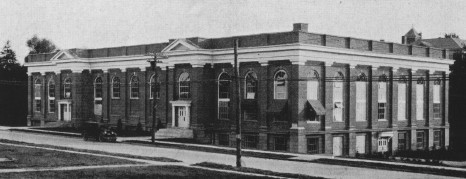 |
| Kentucky's Alumni Gymnasium |
Due to the delays with opening the new arena, the games between Centre and Kentucky went ahead as scheduled using the existing UK gymnasium facility, which lay just up the hill from the new gym. Kentucky won both games in similar fashion. The first halves of each game were tight (a 13-all tie and a 15-14 Colonel lead), however in the second half, Kentucky ran away with the contests, winning 27-18 and 38-24 respectively. In the first game, James McFarland was credited as being the key to the game, not just from his long-range shots which made him the high scorer, but with his guarding of Centre's forward Herb Covington. Covington had scored 18 points in a loss to West Virginia four days prior, but was held to only one field goal against the Wildcats.
In the second game, Kentucky clinched the state title with the victory. Kentucky forward Lovell Underwood came off the bench and scored 10 points in 15 minutes of play to lift the Wildcats. James McFarland and Will Milward each added eight points for the victors. Joseph Dooley led Centre with nine points, mainly on shots from the outside.
At 13-2, Kentucky went on to the Southern Conference tournament in Atlanta as a strong contender for the crown, but due to an unlucky draw, met a strong and undefeated North Carolina squad in the first round. Kentucky was blown out in the game as the Tar Heels continued their march to an undefeated season. Centre, meanwhile, entered the alternative S.I.A.A. post-season tournament held in Macon. The Gold and White beat the University of Chattanooga and Newberry, before bowing to hometown Mercer in the final.
[Boxscore] - 1923-24
[Boxscore] - 1923-24
The 1924-25 season saw some significant changes to the Kentucky program. Alumni Gymnasium was finally fit for use, however Coach Buchheit, who had assembled a respectable 44-27 record at the school over five seasons, was not there to enjoy the new arena. He left the school for Trinity College (now Duke University). The vacant basketball position was filled by Clarence Applegran, a former professional football player who was at the time an assistant football coach at Kentucky under Fred J. Murphy. Kentucky scored a 28-23 victory over Cincinnati in their new home and prospects looked bright, however the Wildcat proceeded to lose the next five games and this brought the expectations for the team back to earth rather quickly.
By the time Kentucky met Centre for the first time that season, the Wildcats had gained back some measure of respect with victories over southern foe Mississippi and local Georgetown College (the five defeats were all against Northern opposition). The game was held in Danville, however Centre was without two of their best players in Captain Robert Thomasson and Herb Covington. Kentucky jumped out to a 12-2 lead, largely due to the efforts of James McFarland who scored 10 points during the flurry, including two goals which came from beyond the half-court line. Kentucky led at halftime 21-15. Centre mounted come-backs but each time were headed by McFarland, Lovell Underwood's inside play and the defense of back-guard Burgess Carey. The game also marked the first action of the season for Charles "Turkey" Hughes, who had been recuperating from a rough football season.
The second game saw the return of star Herb Covington to the Centre lineup, after missing the first two-thirds of the season to injury. Covington's return, however didn't appear to help the Colonels. The largest crowd of the year turned out at Alumni Gymnasium to cheer on the Wildcats in the final regular season game of the year. And the Wildcats didn't disappoint, blitzing the Colonels by a score of 39-10. Noted the Centre yearbook, Old Centre: "Kentucky was held to a seven point lead here (in Danville) and with the return of Covington to the lineup and the fine showing made by Rabenstein late in the season there were hopes of beating Kentucky on her floor. However, unnerved by the delay in starting the game, and dismayed by the great space covered by the floor, in contrast to the floors to which they were accustomed, Centre was not able to make the showing hoped for."
The victory was convincing as most of the Wildcat points came on layups. Kentucky was able to beat their opponents by "drawing out the Centre guards and then scoring with a quick side step and a neat shot through the basket." Once again, James McFarland led the scoring with 11 points. "Turkey" Hughes added eight in a reserve role. Covington was the high scorer for Centre with four points.
Kentucky used the game as a tune-up for the tournament in Atlanta which was held the following week. However the team's inconsistent play got the best of them that year as they lost in the second round to Georgia.
[Boxscore] - 1924-25
[Boxscore] - 1924-25
The 1925-26 season proved to be an outstanding year for the Kentucky program as they finished with a 15-3 record. The team was experienced, with players from old prep state and national champion Lexington High team such as James McFarland and Lovell Underwood finally becoming seniors. Burgess Carey, who also had originally attended Lexington High but had since attended and transferred in from Washington and Lee earlier in his collegiate career was also a senior. But the scoring leaders of the team were a pair of small but flashy sophomores, Gayle Mohney from Winchester and Paul Jenkins from Louisville. The coach of the squad was yet another assistant football coach Ray Eklund who had served as the freshman basketball coach the prior season, leading the team to an undefeated slate and claiming a state title.
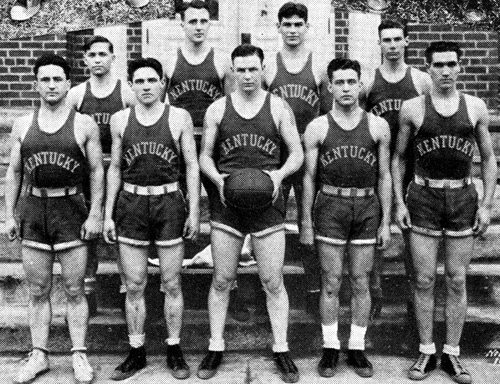 |
| 1925-26 University of Kentucky Basketball Squad Front Row (l to r): James McFarland, Gayle Mohney, Burgess Carey, Paul Jenkins, Lovell Underwood Back Row: Chuck "Speedy" Alberts, Henry Besuden, Arville Hickerson, C. Foster Helm |
Centre was also in the midst of some changes. In 1926, the school finally became co-educational when the Danville Kentucky College for Women merged with the school and became a department devoted to women's studies. In January of that year, Centre again joined a revamped K.I.A.A. The members were Berea, Centre, Georgetown, Kentucky Wesleyan, Louisville, Ogden, Transylvania and Western Kentucky. The K.I.A.C. (formerly the K.I.A.A.) that year organized their own post-season tournament. Centre faced Berea College in the opening round, and lost to the eventual tournament champions. Centre remained active in the local state athletic conference as their participation in the larger regional events became less prevalent.
 |
The second half saw the Wildcats jump ahead once again, but this time they maintained the edge and Centre went down to defeat 45 to 25. Gayle Mohney and James McFarland were the stars of the game for Kentucky, scoring 11 points and 10 points respectively. This despite Mohney leaving the game in the third quarter when he struck his head on the floor. O'Neil led the Colonels with nine points.
The return game was held in Centre's Boyle Humphrey Gymnasium a little over a week later. Centre employed a five-man defense to try to slow the UK juggernaut but it had little effect, other than to see Captain Summers ejected on personal fouls in the first half after keying on UK's scoring ace Mohney. Kentucky's defense was itself stellar, as back-guard and defensive specialist Burgess Carey patrolled the UK basket preventing easy scores by the Colonels. In fact, all of Centre's four field goals ended up coming from long distance shots. Kentucky raced to a 23-6 lead at halftime and finished the game with a 46-19 victory. Mohney led the way with 15 points, while Paul Jenkins added 11 for the victors.
Given the relatively easy victories, the Kernel correspondant was emboldened to boast, "The victory marked Kentucky's fourth triumph over Centre this school year. The freshman and varsity football teams trampled them in the fall, and the Wildcat basket ball team has won two victories by overwhelming scores. The period of the Colonels heyday and supremacy is only a hazy remembrance now as the Blue and White reigns in the state and probably the South."
[Boxscore] - 1925-26
[Boxscore] - 1925-26
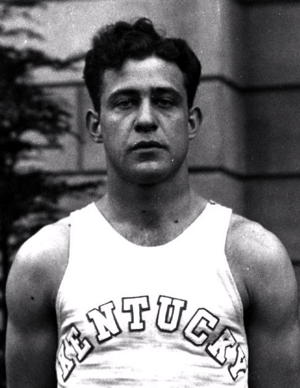 |
If the personnel losses weren't damaging enough, there was an abrupt coaching change just prior to the start of the basketball season. Coming off a poor 2-6-1 football campaign (which included a 7-0 shutout by the Centre Colonels), Fred Murphy and his staff were fired. Football assistant Eklund, who had so ably guided the basketball squad the year before, did not stick around. In need of a quick hire, the administration turned to former All-American Basil Hayden, who had briefly coached high school basketball along with Kentucky Wesleyan after graduating from UK, but since that time had entered the insurance business. With only a few days to prepare and given the green squad he inherited, Hayden was placed in a no-win situation. Asked about his star Jenkins, Hayden remembered "He thought he knew more about coaching than I did. He could have been a lot better if he was disposed to do so. He couldn't get that interested in things because he didn't have any help." In hindsight, maybe Jenkins did know more about the game. Hayden left coaching for good after the fateful season while Jenkins went on to become a great high school coach, winning state titles at Ashland and Louisville Male.
The season was a disaster for Kentucky. Entering the first game between the two schools, Kentucky was a dismal 1-8. The Wildcats regained some measure of respect with a victory over Centre. But it didn't come easy. The game was won on a last-second shot by reserve forward Edwin "Toots" Knadler in a thrilling finish. Many of the 3,500 fans rushed the court to congratulate the hero of the moment. "Toots" had entered the game with only three minutes remaining in the game, but he played an instrumental role by putting UK ahead 25-23, before Centre's Marida Maggard knotted the score once again.
The second game was won by Kentucky 22-16. Lamented the author in Old Centre, the "Colonels played like so many dead men and for the second time State College triumphed over Centre . . ." Remembered Coach Hayden, who would live to the age of 103 and become known as the last Kentucky coach to post a losing season, until Eddie Sutton lifted that burden in 1989. "I couldn't get a very good effort out of them all season," Hayden said. "They had no incentive, except against Centre, which had beat them in football. I remember in that second game the Centre coach didn't let his boys shoot until they were in close to the basket. By the time he changed his mind, it was too late."
[Boxscore] - 1926-27
[Boxscore] - 1926-27
For the 1927-28 season, Kentucky hired a young coach out of the University of Illinois by the name of John Mauer. Mauer had been a star in both football and basketball, where he learned from two of the best coaches of the era, in Robert Zuppke and Craig Ruby respectively. His senior year at Illinois, Mauer earned the distinguished "Conference Medal of Honor" award for being an outstanding athlete and scholar in the Big Ten Conference.
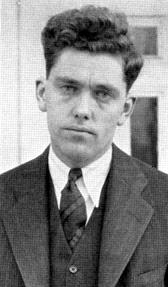 |
Mauer's ability as a teacher was put to the test as he set about rebuilding the program from virtually square one. Mauer proved equal to the task, as in his short three-year tenure at the school, he laid the foundation for many years to come. Said Paul McBrayer who played all three years for Mauer and became an All-American under him, "He wanted us to get an education. He wanted us to play each ball game up to the hilt. He wanted us to bring out the best in ourselves in every way, and he led by example. His life was such that you could admire and respect him."
Kentucky and Centre played twice that season, with the first game held in Danville in early January. Hays Owens scored the first basket for Kentucky, but Maggard hit a foul shot and Moco Staley scored a fielder to give Centre it's first and only lead of the game, 3-2. After that, the Wildcats blitzed the Colonels in the first half, resulting in a 20-9 halftime lead.
The second half saw the two teams battle on more even terms, but by that time the game was well in hand the Wildcats left Danville with a 36-23 victory. Cecil "Pisgah" Combs was the high point man for the Wildcats with 15, while Moco Staley and Mason Knuckles paced the Colonels with six points apiece.
Centre went on to embark on a tour of the Missouri Valley schools but returned later in the season to meet Kentucky in Alumni Gymnasium. The return game was ugly, as both teams used a methodical style of play, and neither doing it very well. Lamented Frank Hoover of the Lexington Herald, "The Colonels used a waiting offense, like Kentucky, and this made the game slower than sorghum molasses. May we never see another one like it !"
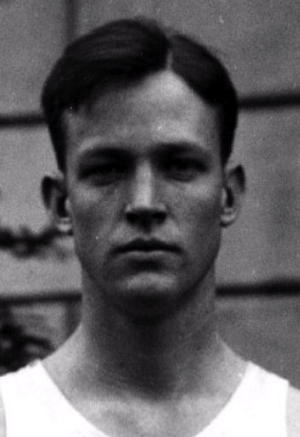 |
Kentucky won the game 30-20, although the Wildcats play was lackluster and they were lucky for the victory. They enjoyed a 15 to 7 free throw advantage over their opponents, and converted on 10 of those, as compared to two for the Colonels. Kentucky also benefitted from Centre's Moco Staley and Paul O'Neil fouling out of the game in the second half. "Pisgah" Combs once again led the Wildcats in scoring with 19 points. Also key in the game was the play of Irvine Jeffries who had joined the squad mid-way in the season. Marida Maggard paced the Colonels with eight points while Kelly Deaton added seven.
Little mention of the games were made by the local Danville papers. The Danville Messenger only mentioned the game in passing, taking pride in the fact that the Colonels held the Wildcats to only 30 points and was looking forward to competing in the state tournament in Winchester the following week, where the competition was more comparable to Centre. The Kentucky Advocate, as was becoming its custom, failed to mention the game at all.
[Boxscore] - 1927-28
[Boxscore] - 1927-28
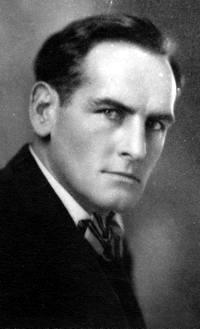 |
Centre's coach Boise Potthoff and the Centre squad were outclassed by the blue-clad basketeers. The domination was so complete that Centre scored only three field goals, all in the second half and at long distance. Meanwhile the Wildcats were scoring crips at will, and turned over the attack to the reserves for much of the second half. Junior center Stan "Spooks" Milward led the Wildcat attack with 11 points while "Pisgah" Combs added 10 on five field goals. Bob May, who scored two of Centre's three field goals, led the Colonels with six points.
[Boxscore] - 1928-29
Later that fall, Kentucky faced Centre on the gridiron in Danville and despite the return of a former Colonel great from the glory years, Edwin Kubale, the Wildcats shut them out 33-0. This was the third straight football victory by Harry Gamage and the Wildcats over their old rivals, with all three games shut-outs and a total scoring margin of 94-0. The writing was on the wall for the Colonels. Gamage cancelled the series between the schools in favor of a game against Virginia. Centre and Kentucky never met again on the gridiron.
As for the basketball squad, Mauer remained in Lexington for one more season (1929-30) before leaving town in a salary dispute. He brought Kentucky back to respectability with a 40-14 record at the school, however his teams never were able to get over the hump and bring back the hardware from the post-season Southern Conference tournament held in Atlanta.
Mauer was replaced by a young high school coach by the name of Adolph Frederick Rupp. Rupp set about building off of what Mauer had established and took the program to unforeseen heights, rewriting the record books along the way. Part of Rupp's philosophy was to not play local teams but to look beyond the Commonwealth toward playing stronger competition throughout the country. The chances of a revival in the old series with Centre became dimmer and dimmer with each passing year.
To many Wildcat fans, basketball at the University of Kentucky didn't begin until Rupp took over as coach of the program. To many authors of UK basketball books, Wildcat basketball squads prior to Rupp's arrival are barely mentioned, if at all. With each victory and achievement by Rupp and the Big Blue, the chaotic and uneven early years of the program became less and less memorable.
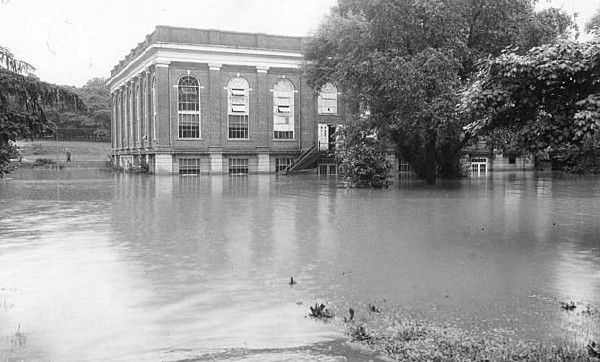 |
Beyond that, in the summer of 1928 the city of Lexington endured torrential rains which left much of the city flooded with water. One area of particular destruction was Alumni Gymnasium, which was built on an area of land which was once marshland and an occasional lake. Flood waters rose an inch over the playing floor. Unfortunately the basement of the gymnasium held the basketball offices and official records of the program to date. Much of that historical information was lost forever in the wash.
Given Rupp's amazing success, the loss of critical historical records and the natural progression of time, as the years passed, remembrances of what was once a great and fierce rivalry between Kentucky and Centre faded to distant memories, perhaps more quickly and completely than it deserved.
![]()
Please note that the following reference materials were consulted for the above. 1.) Lexington Herald 2.) Lexington Leader 3.) Louisville Courier-Journal 4.) >Kentucky Advocate 5.) Danville Daily Messenger 6.) Big Blue Machine by Russell Rice 7.) The Winning Tradition by Bert Nelli 8.) Before Big Blue by Kenneth Stanley 9.) Bo McMillin: Man and Legend by Charles Akers and John Carter 10.) March Madness: the Kentucky High School Basketball Tournament by Mike Embry 11.) The Idea (later the Kentucky Kernel) 12.) The Kentucky Kernel (UK Student Newspaper) 13.) The Cento (Centre College Student Newspaper) 14.) The Kentuckian (University of Kentucky Yearbook) 15.) Crimson and Blue (Central University Yearbook) 16.) Old Centre (Centre College Yearbook) 17.) Centre College website 18.) Eastern Kentucky website 19.) Kentucky Digital Archives website among others. Special thanks to Archivist Bob Glass of the Centre College library, the staff of the William T. Young Library at the University of Kentucky and the late Kitty Baird for reviewing this manuscript.
Return to Kentucky Rivalries, Centre Series Results, statistics, teams, opponents, players, coaches, opposing coaches, games or search this site.
Page written by Jon Scott. Please with any corrections or additional information.
Last Updated October 22, 2017